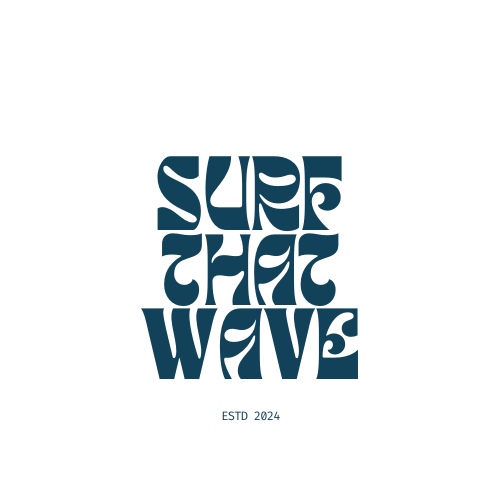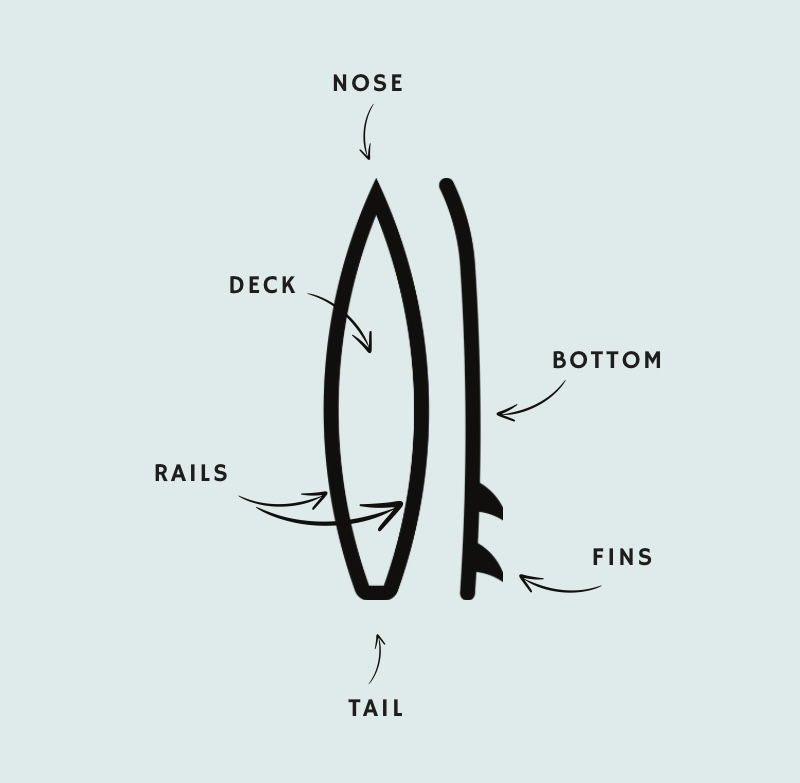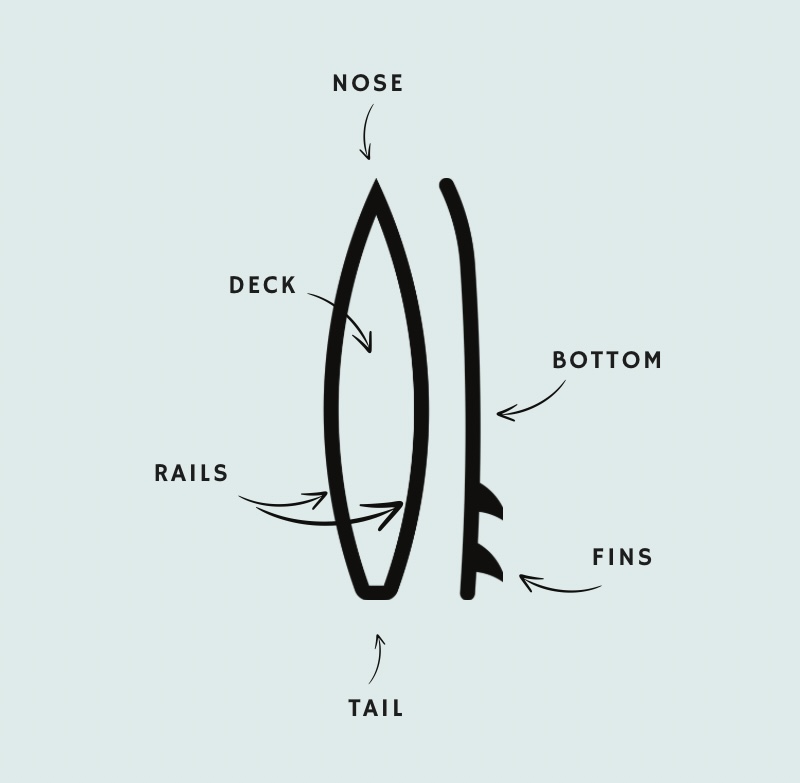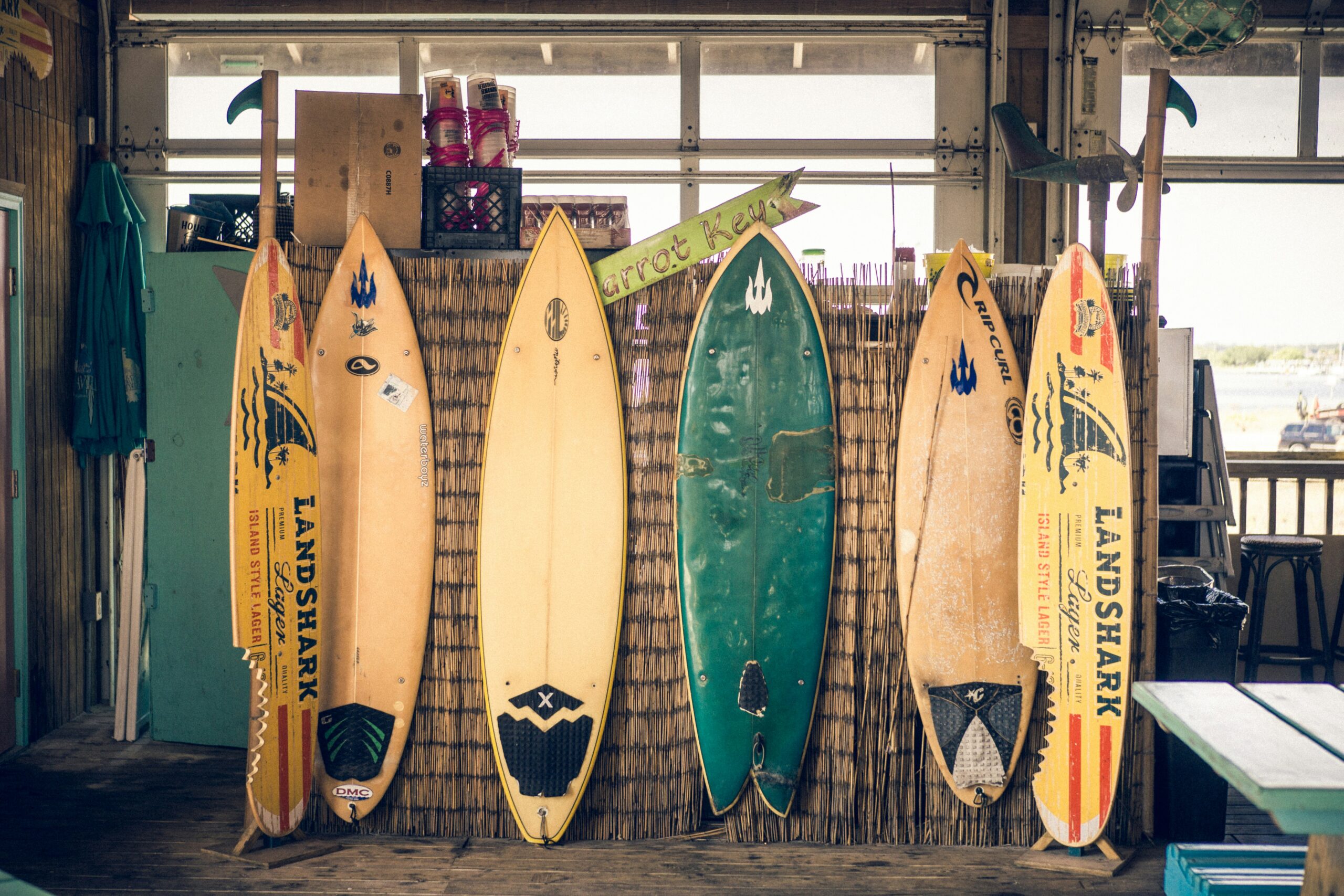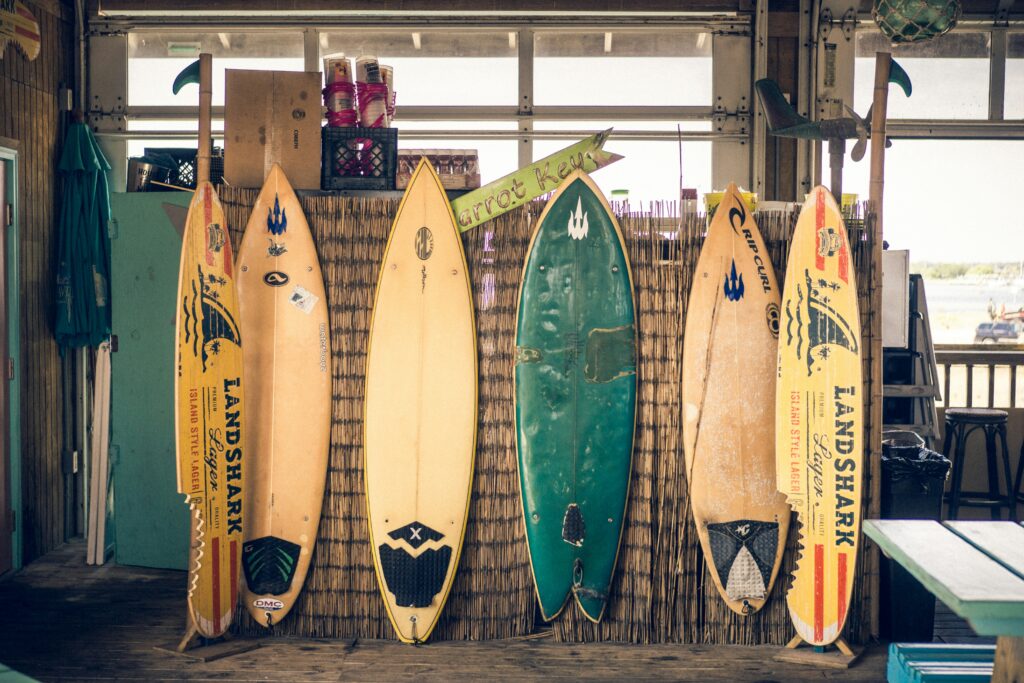1. Understanding Surfboard Basics
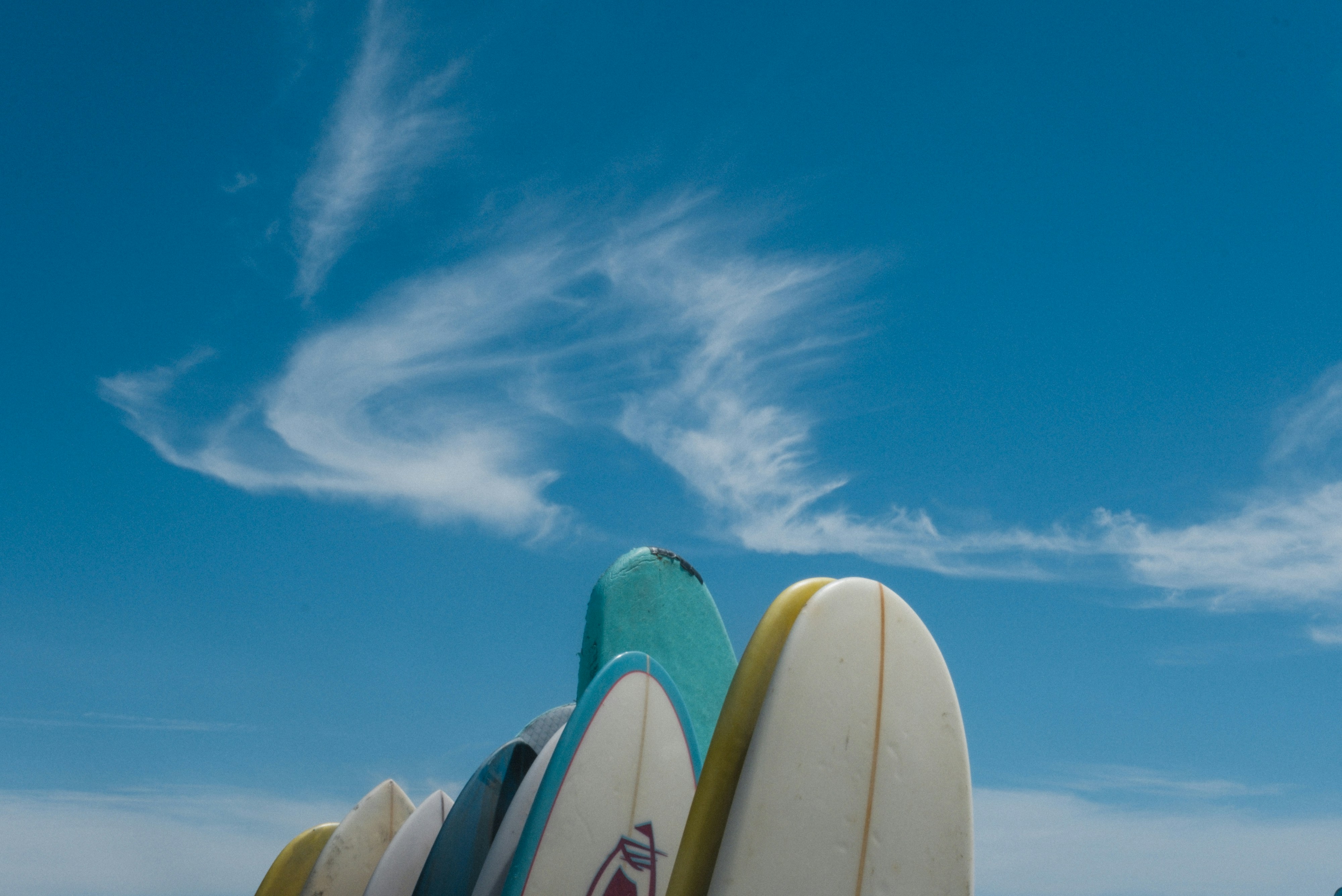
1.1. Types of surfboards
Surfboards come in many shapes and sizes, each designed for different waves and skill levels. The main types include:
- Longboards: Perfect for beginners and small waves
- Shortboards: Ideal for quick turns and bigger waves
- Fish boards: Great for small to medium waves and quick acceleration
- Funboards: A mix between longboards and shortboards, good for all levels
1.2. Key components of a surfboard
Every surfboard has several important parts:
1.3. How surfboard size affects performance
The size of your surfboard can make a big difference in how it performs:
- Longer boards are more stable and easier to paddle
- Shorter boards are more maneuverable but harder to balance on
- Wider boards provide more stability and float better
- Thinner boards are faster but less buoyant
2. Assessing Your Surfing Level
2.1. Beginner: Learning the ropes
If you’re just starting out, you’ll want a board that’s:
- Longer (8-9 feet)
- Wider (22-24 inches)
- Thicker (2.5-3 inches)
These dimensions will give you more stability and make it easier to catch waves. Don’t worry about looking cool – focus on having fun and staying safe!
2.2. Intermediate: Refining your skills
As you improve, you might want to try:
- Shorter boards (6-7 feet)
- Narrower width (19-21 inches)
- Less thickness (2-2.5 inches)
This will allow you to make sharper turns and handle bigger waves. But don’t rush it – make sure you’re comfortable before moving to a smaller board.
2.3. Advanced: Mastering the waves
Experienced surfers often prefer:
- Short boards (5-6 feet)
- Narrow width (18-20 inches)
- Thin profile (1.5-2 inches)
These boards allow for maximum maneuverability and speed. But remember, even pro surfers use different boards for different conditions.
3. The Role of Height in Surfboard Selection
3.1. Height-to-board length ratios
A good rule of thumb is:
- Beginners: Board should be about 3 feet longer than your height
- Intermediate: Board length = your height + 6 inches
- Advanced: Board can be shorter than your height
But these are just guidelines – your weight and the wave conditions also matter.
3.2. How height impacts balance and control
Your height affects your center of gravity, which influences how you balance on the board. Taller surfers might need a bit more length or width for stability, while shorter surfers can often manage smaller boards more easily.
3.3. Adjusting board length for different heights
If you’re taller than average, you might want to add a few inches to the recommended board length. If you’re shorter, you might be able to go a bit smaller. The key is to find a board that feels comfortable and manageable for you.
4. Weight Considerations for Surfboard Sizing
4.1. Understanding volume and buoyancy
The volume of a surfboard (measured in liters) determines how well it floats you. More volume means more buoyancy, which is helpful for heavier surfers or beginners.
4.2. Weight distribution on the board
Your weight should be evenly distributed when you’re lying on the board. If you’re too heavy for the board, the nose might dip underwater when you paddle.
4.3. Choosing the right thickness for your weight
Heavier surfers generally need thicker boards for more buoyancy. As a rough guide:
- Under 150 lbs: 2-2.5 inches thick
- 150-200 lbs: 2.5-3 inches thick
- Over 200 lbs: 3+ inches thick
Remember, these are just starting points – your skill level and the type of waves you’ll be surfing also matter.
5. Matching Surfboard Size to Wave Conditions
5.1. Small waves: What works best
For small, gentle waves (1-3 feet), you’ll want:
- Longer boards (7-9 feet)
- More volume
- Wider nose and tail
These features help you catch waves more easily when there’s less power in the water.
5.2. Medium waves: Finding the balance
For medium waves (3-5 feet), a versatile board is best:
- Mid-length (6-7 feet)
- Moderate volume
- Slightly narrower than a small-wave board
This setup allows for both easy wave-catching and some maneuverability.
5.3. Large waves: Staying safe and in control
For big waves (6+ feet), you’ll need:
- Shorter boards for control (5-6 feet)
- Less volume for maneuverability
- Narrower outline for cutting through water
Safety is key in big waves, so make sure you’re experienced enough before tackling them.
6. Fine-tuning Your Surfboard Choice
6.1. Considering your fitness level
Your overall fitness affects your surfing. If you’re very fit, you might be able to handle a smaller board than someone of the same height and weight who’s less fit.
6.2. Adapting to different surf spots
Every beach has its own character. A board that works well at your home break might not be ideal for a surf trip to a different coast. It’s worth having a couple of different boards if you surf various spots.
6.3. Seasonal adjustments in board selection
Many surfers have a “summer board” and a “winter board.” Summer often brings smaller waves, so a longer, more buoyant board can be good. Winter waves are often bigger and more powerful, so a shorter, more maneuverable board might be better.
7. Testing and Adjusting Your Surfboard Size
7.1. Borrowing and renting before buying
Before investing in a new board, try to borrow from friends or rent from a surf shop. This lets you test different sizes and shapes to see what feels right.
7.2. Signs that your board size is right
You’ll know your board is a good fit if:
- You can catch waves consistently
- You feel stable when standing up
- You can turn and maneuver as you want to
- You’re having fun!
7.3. When and how to make changes
If you’re struggling to catch waves, falling off a lot, or feeling frustrated, it might be time to try a different size. Don’t be afraid to ask for advice from more experienced surfers or local surf shop staff.
Summary
Choosing the right surfboard is a personal journey. It depends on your height, weight, skill level, and the waves you’ll be riding. Start with a bigger board for stability, and gradually move to smaller boards as you improve. Remember, the best surfboard is the one that helps you catch waves and have fun!
